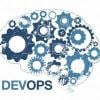Related Content
 |
Achieve Repeatable Builds with Continuous Integration Continuous integration is essential to provide the feedback needed to keep a team’s code agile. One crucial aspect to a successful CI process is a repeatable build. There are two parts to maintaining a repeatable build: the idioms and practices to define it, and the feedback cycle to maintain it. Here's what you need. |
|
 |
Choosing a Container Orchestration Platform with Docker Docker is the de facto container platform, supporting the microservices architecture for deploying loosely coupled applications. However, Docker supports several container orchestration platforms—which should you choose? Let’s look at some of the main platforms: Kubernetes, Docker Swarm, OpenShift, Mesos, and CFCR. |
|
 |
Using a Multibranch Jenkins Pipeline with Docker Typically, code for a Docker image is developed using multiple GitHub branches, with each branch being the code for a single Docker image tag. However, having to create and run a Jenkins pipeline for each GitHub branch can be cumbersome. Try a multibranch pipeline to integrate multiple GitHub branches simultaneously. |
|
 |
Why the Burden of Security Should Be Assumed by the Entire Team Quality can be improved over time, and while it’s difficult to change perception, it’s still possible. But poor security can sink your ship before it even leaves the dock. Invest in the security of your application and be sure to spread that responsibility to multiple levels of your software team. |
|
 |
Engineering Architecture Systems for a Faster Build In the era of continuous integration and continuous deployment, big applications are creating bloated build pipelines. The problem is when code becomes so entangled that every change impacts large portions of the system, meaning there’s a lot to rebuild. If you reshape the code architecture, you can reduce build times. |
|
 |
What’s in the Fall 2016 Issue of Better Software Magazine? In the cover feature article of the fall 2016 issue of Better Software magazine, “The Evolution of Software Monetization,” Michael Zunke details how software vendors misfire in an attempt to balance protection of their intellectual property with complicated software licensing schemes that frustrate customers. |
|
 |
DevOps or NoOps: Can You Have Too Much Automation? Some DevOps thought leaders have been promoting “NoOps,” which is the notion that IT resources can be provisioned in a fully automated way that does not require operations engineers to manage. There have been notable successes with this approach, but also some challenges. Can you have too much automation? |
|
 |
DevOps Begins with Developers The DevOps movement accelerates the delivery of high-quality features to customers. While that's great, there is a ton of work required to make it happen, with a high change curve to overcome—and perhaps the most critical change is to the way the developer works. Here's why this disruption is necessary. |







